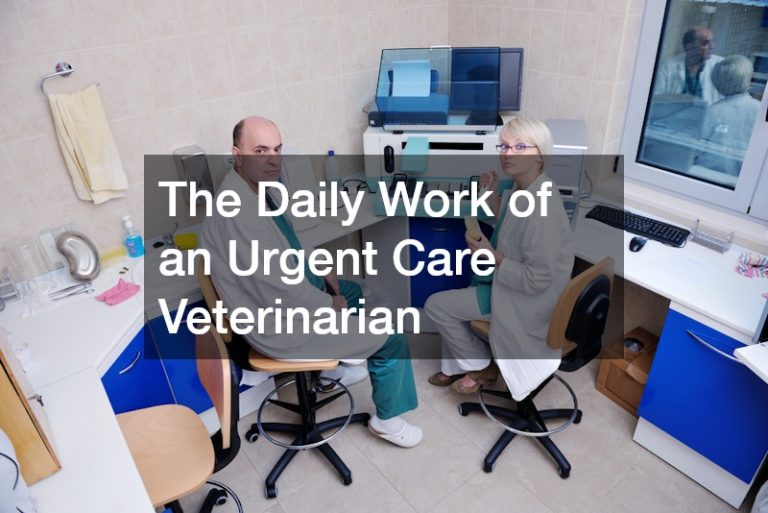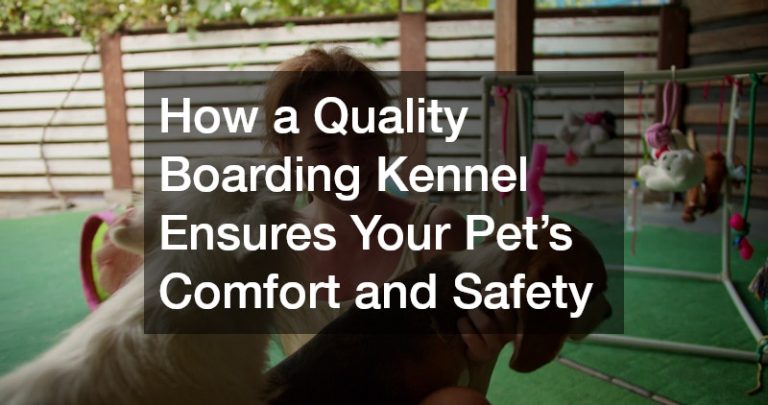Adopting a pet means inviting changes to your family, your regular schedule, and overall spending budget, including your home. Most times, living spaces like houses or apartments are not equipped with the accommodation needed to ensure the safety and comfortable living of a pet. This usually means you will have to adjust your living arrangement to make your family and new pet feel at home. Adjusting to these changes in your house should not deter you from getting a pet, however. If possible, make adjustments so that your home becomes more pet-friendly and also ensure to do it in a safe manner. You could take it as a chance to fix some stuff in the house such as paint or damaged cabinets. Here are a few suggestions you can use to renovate your home if you are planning to adopt a pet.
Take Care of Your Home’s Flooring
If you get the opportunity to change the flooring in your house, pick an easy-to-clean, non-porous surface material. Finding a reliable concrete contractor is one piece of advice you may get from a pet vet. There are various flooring options you can choose that are suitable for pets. Hardwood, tiles, and concrete are ideal surfaces if you are planning on adopting a pet. Choosing soft floor surfaces could get damaged from your pet’s claws and paws.
Customize Your Pet’s Eating Area
Setting out a specific area for feeding your pet is an ideal way of providing comfort to your pet. This means that you will not bother your pet during feeding time and they will in turn not occupy space in your home’s kitchen. It is also a suitable way to make sure your home remains clean and organized to avoid spilling accidents.

Create a Mudroom in Your Home for Your Pet
Mudrooms are beneficial in preventing dirt from entering your house. If you reside in a location where your pet will be exposed to dirt constantly and soil in your home, set out a small section in your home near the entrance. You can use it in cleaning your pet’s paws when they come back from a walk or from playing outside. It’s also a good alternative for storing your pet’s washing products, leashes, and other things.
Install a Pet Shower in the Mudroom
It may cost much, but if you can afford it, installing a shower and plumbing into your pet’s mudroom is beneficial. This will make it easier for you to clean your pet’s body and paws after playing outside. You can also use the shower to groom your pet if you install additional features like a bath or grooming table to groom and wash your pet.
Consider a Specified Cabinet to Keep Your Pet’s Food
Set out a separate cabinet to be used for storing your dog’s food. This makes it possible to keep your pet’s food safe to keep it from getting spoiled or damaged. This also enables your pet to get trained on when it is time for feeding.
Install Pet Doors in Your Home
Pet doors are a convenient feature in your home. They are, however, costly to install when you remodel your home. Try to install pet doors into your home’s front door for your pet to have easy access to it.
Take Care of Your Countertops
Together with choosing an ideal flooring for your pet, you also need to pick a suitable material for your countertops if you are going to update them. Laminate plastic or granite is a good example when it comes to choosing the ideal countertop material.
Design a Pet Toilet Area
If you plan to adopt a pet that frequently does its business indoors, consider setting up a toilet on your home’s balcony or corridor. You can make it to be a separate room or use the aforementioned mudroom to install this feature specifically for your pet’s usage. It’s a good choice when you are adopting a new pet.
Create Vantage Points for Your Pet
Pets are prone to get bored when left alone at home. If your current residence does not give your pet a perfect viewing, ensure that you provide your pet with a good view if you leave them alone at your house.
Create a Soundproof Space for Your Pet
Just like humans, pets also need a space of your own. Setting up a small part of your living room or another room in your home that is isolated from noises will make your pet rest peacefully and feel secure.

Provide Easy Access to the Staircase for Older Pets
Adopting an older pet means they are prone to have joint and other health issues. If you reside in an apartment complex and live on the first floor if your house contains more than one floor, you could renovate the staircase. You can make the staircase lower will help greatly to address your pet’s joint or health problems.
Create an Area for Indoor Exercising During Winter Months
Winter seasons are not ideal to walk pets as it is hard and risky to do so. Nevertheless, exercise is integral to the well-being of your pet. An open or bigger hallway or living room conserve as an indoor space to do playtime or indoor activities with your pet during the winter months.
Safety Tips for When You Are Renovating Your Home for Your Pet
Remodeling or renovating your house in a particular way for accommodating a new pet is a prolific idea. There are important things you should adhere to as you perform renovations to your house to keep your pet out of harm’s way. This is because there are many hazards involved when doing remodels on your home. Here are some of the tips a pet vet might recommend to you.
Have Your Home Inspected Beforehand
Before you commence on any projects, it’s wise to have your house inspected for asbestos insulation, mold, and paint based on lead. These conditions are also not suitable for humans to live in as well. Getting a reliable spray foam insulation company is one way a pet vet could recommend you ensure your home is safe for your new pet. This makes it unsuitable for your pets as well when they inhale them.
Hazardous Materials and Chemicals
If you are going to hire professional home contractors, it means there are going to be workers renovating your home. It’s not always ideal to leave your dog in their care. You should be aware that the materials used to renovate your home such as epoxy coating for garage finishing can be ingested, licked, or inhaled by your pet.
Try to Work Outdoors If You Can
There are lots of stuff in home renovation that require them to be done indoors which a pet vet can recommend to you. Painting, spraying, or cutting can occur outdoors on your property. Whether you do it for personal reasons or through professionals, it’s encouraged that you work outdoors if possible.
Supervise Your Pet
It is unlikely that workers tending to your home’s renovation will have the well-being of your pet in mind. Ensure to watch your pet closely and when you are unable to keep an eye on him, make sure to keep him in an enclosed space and away from danger. For more renovations, you can have a friend or family member watch over your pet or take it to a pet day car.
Find a Safe Space for Your Pet
If you have a room in your home that will not undergo remodeling or renovation, you should consider moving your pet into that room entirely. Take all their toys, pillows, crates, and food bowls and settle them there for the duration of your remodeling project such as broken window repair.
Keep Your Pet’s Schedule Consistent
Pets are highly dependent on their routine and schedule. Having an irregular walking or feeding schedule can cause stress to your pet, especially if your home is going through a renovation process. Follow your pet’s schedule as closely as possible.
Be Mindful of Everything Happening
Check your home at the end of the day for materials that may be lying around which may cause disastrous accidents such as open windows, toxic materials, staples, nails, etc. Missing important details like these can cause your home renovation to turn into a health issue. You should also consider hiring an AC installation service to ensure you get reliable indoor air quality services.
Furnish Your Home With a Purpose
Home remodeling or improvement often gels well with the furniture. Getting reliable interior design services to take care of hiring a local roofer for roofing replacement. Take your time to research perfect window design furniture pieces that are easy to maintain and pet-friendly. This does not necessarily mean you have to change your style and preference. You only have to learn how some furniture is cleaned and maintained in advance. You may have to tweak your options a bit to make them pet-friendly in your home, but it will prove to be beneficial and save you from replacing items before you commence your remodeling project.

Make Sure Your Landscape Is Pet Friendly
Create an interesting yard that is suitable for both you and your pet including trees and shrubbery in pathways as well as where your pets can play and roll around outdoors. Choose green scenery that won’t get easily damaged by your pet’s paws when they trek through them and avoid plants that pose a risk for your pet. If you reside in a region where snow might cover your yard, avoid landscape designs that include drops, rocky mountains, and other various elements that may cause injuries to your pet.
Choose an Ideal Fence
Fences aren’t created in equal proportions and sizes. Ensure your home’s fence has a suitable height to prevent your pet from jumping over it. Install a fence deep enough to prevent your pet from digging underneath it. Pets are notorious for damaging outdoor materials, so double-check to make sure that the fencing you pick can endure any damage that is done to them. You can hire a professional to help you and guide you in picking out a suitable pet-friendly option.
Install Ramps
Whether your pet is dealing with health issues and aging or is spry and young, you should consider installing ramps and include them in your remodeling plans. This gives your pet allowance to move around your house easily and eliminates the stress that comes with accessing staircases. Installing ramps as alternatives to staircases also eliminates the risk of injury to your pet.
Consider Your Decor
Avoid getting upset over your home’s decor and breakage of fragile pieces by minimizing installing pieces that are vulnerable to breaking. Stick with sturdy decor pieces that can endure the occasional trip over and minimize your home’s decor to ones you can set on the floor.
Pet-Proof Your Home
Animals naturally like to explore different things and have an inquisitive nature. Consider installing tightly-closed pet food containers and trash cans to help control your pet. You should also tie blind cords higher to prevent them from getting entangled. Electrical cords should be moved or hidden since pets tend to chew on them during their teething phase.

Reconsider Your House Plants
Indoor plants tend to attract pets due to their similarities with the outdoors. They can, however, pose a risk to your pet as some plants are toxic to pets if inhaled or ingested. Ensure you do extensive research on whether your house plants are harmful to your new pet and change them for pet-friendly house plants. While many house plants are toxic to pets, here are some house plants that are safe options for pets:
- Herbs such as sage, thyme, and basil
- Parlor palm
- Succulents such as hens and chicks
- Ferns like maiden hair fern and Boston fern
- Christmas cactus
- Air plant
Stock Up on Pet Supplies in Your Home
When adopting a new pet, you are going to need to stock your home with various supplies ideal for pets such as treats, collars, dishes, and food products. Once you bring the pet to your home and name them, remember to get an I.D for your pet. Make sure that your pet’s I.D includes the name of your pet, your home’s address, and your contacts so that it will be easier for you to locate them in case they get lost. You should also consider getting pet spray or training pads and pet cleaning products such as spot removers if you are going to be a box or house training. When making preparations to be a pet owner, you should find a pet vet to help secure your pet and keep them safe.


